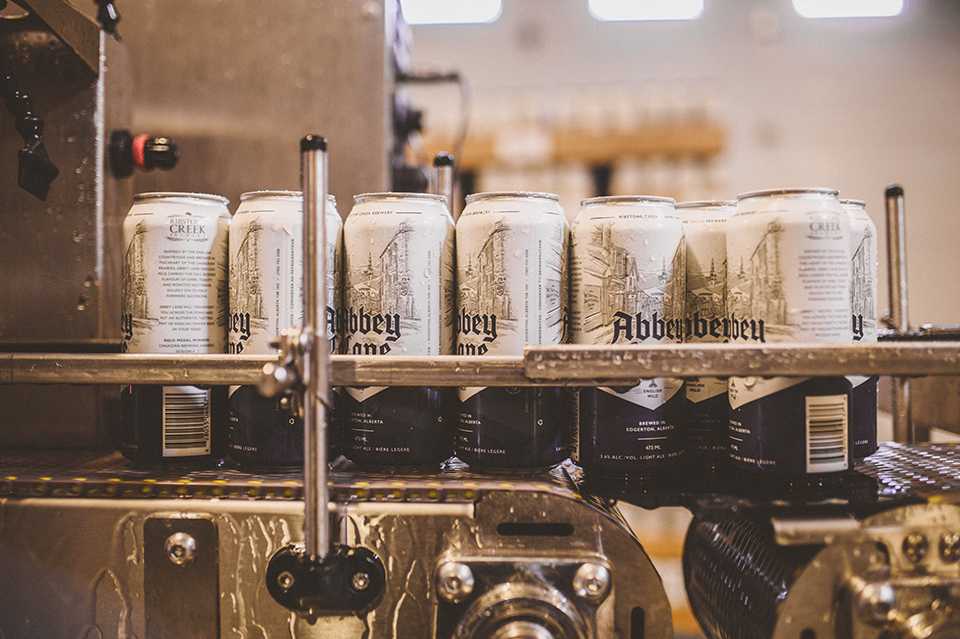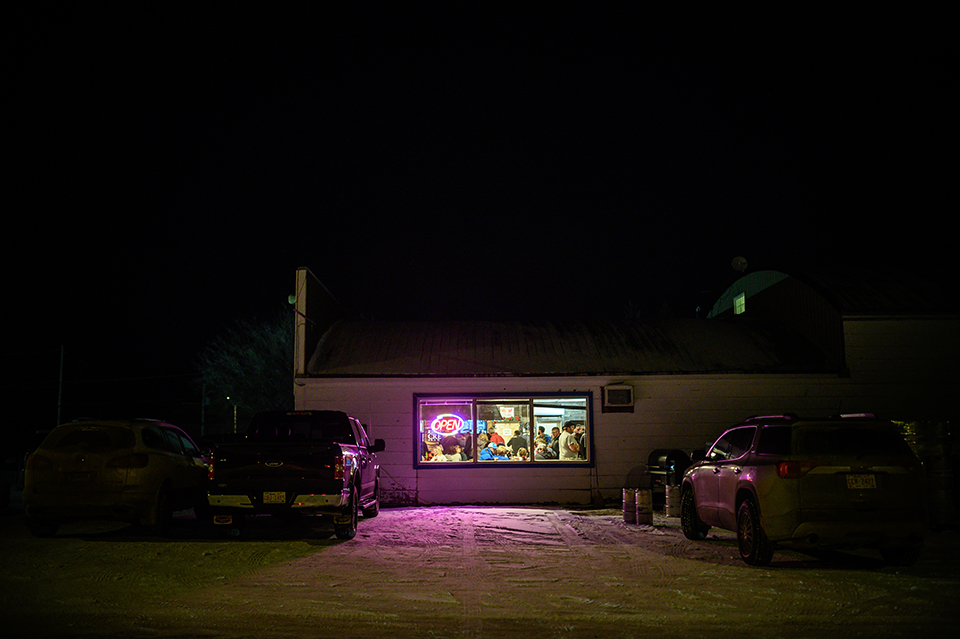
These aren’t easy times for Alberta. Between low oil prices hammering the oil patch and the COVID-19 pandemic’s continued damage to the wider economy, the headlines have been delivering a steady stream of bad news.
Before the pandemic, far from the office towers of Alberta’s two main cities, a success story had been quietly unfolding in rural Alberta: craft breweries opening in small towns all over the province. The rural-brewery boom (and the wider growth of Alberta’s craft beer industry) may not have the power to single-handedly diversify the economy but, in recent years, rural breweries have been creating jobs, attracting visitors and generating spin-offs in places where even small gains can make a difference.
Then the pandemic arrived in Alberta. Like it did to just about every other sector of the economy, COVID-19 hit the craft beer business hard. This was particularly true in the early days of spring 2020, when public health restrictions closed bars and restaurants that breweries relied upon for sales and left them unable to open their taprooms to customers.
Like businesses in many other industries, craft breweries weathered the initial storm by making quick adjustments. They devised ways to get beer to customers in different ways, such as online sales and delivery. Many breweries also found new revenue streams, like manufacturing hand sanitizer.
The pandemic has already left an indelible mark on Alberta’s craft beer industry, but observers say the changes won’t alter the role that small-town breweries can play in helping diversify the province’s economy. If anything, craft beer industry representatives say the economic spin-offs it creates will be even more important as Alberta looks for ways to recover from the pandemic.
“We see ourselves as being a really central part of that recovery piece,” says Mike McNeil, who recently departed his post as executive director of the Alberta Small Brewers Association, which represents most of the province’s craft breweries. “We need to be a part of that diversification conversation — more now than ever before.”

The number of independent craft breweries in Alberta currently sits at more than 125, an explosion fueled by regulatory changes in 2013 that eliminated minimum production quotas that barred small players from entering the market and kept the number at about 12 for many years.
The growth isn’t only a rural phenomenon — the Calgary area has more than 50 breweries — but, depending how you define it, about a third of Alberta’s breweries are in small towns firmly outside urban centres. (If you broaden the definition of “rural” to include bedroom communities near the big cities, it’s closer to 40 per cent.)
“They’re the unheralded anchor of the Alberta beer industry,” says Jason Foster, an Edmonton beer writer and educator, who has chronicled the growth of craft beer on the Prairies for nearly 20 years.
And they’re making great beer, too. Blindman Brewing in Lacombe took second place in the Best of Show competition at the 2020 Alberta Beer Awards with a version of its 24-2 Stock Ale that was aged in barrels with brettanomyces wild yeast.
Critical success? Yes, but Blindman’s continued expansion since opening in 2015 is strong evidence that locals, too, have embraced its creative and adventurous beers.
How and why did this happen? It’s likely a combination of factors. People are increasingly interested in buying locally made products for a variety of reasons, whether it’s an ethical choice, an environmental stance or simply a desire to support businesses run by family members, friends and neighbours. In rural Alberta, that “buy local” philosophy likely gets some help from beer’s intrinsic connection to agriculture and the fact that Alberta farmers grow some of the best malt-grade barley in the world.
There’s also necessity — and its offspring, innovation. Some small towns looking for ways to lure businesses and economic activity rolled out the welcome mat for breweries at a time when city planners were still throwing up roadblocks.
“They’re trying to make it work for small business,” McNeil says. “There were small communities that would contact me to try to recruit small breweries to come to their town.”

For an illustration of how a brewery can have a big impact in a small place, drive two hours southeast of Edmonton to Edgerton, a village of 425 near the provincial boundary with Saskatchewan.
Edgerton is home to Ribstone Creek Brewery, established by a group of locals who wanted to breathe new life into an old building that had housed, at various times, a farm equipment dealership, a gas station and a service centre.
A number of ideas failed to attract interest or investors’ money, but co-founder Don Pare remembered how the idea of a brewery grabbed people’s attention.
“That idea that you could have a beer that was locally made kind of intrigued people,” he recalled in an interview earlier this year.
Without a brewer among them, the founders wisely brought in an independent consultant, David Beardsol, as a partner. They followed that smart decision with another: To enter the marketplace in 2013 with an easy-drinking lager to win over a populace loyal to Bud and Coors Light.
Ribstone expanded its lineup and got more adventurous. Customers’ palates followed. Between taproom staff, brewery operations and sales, Ribstone employed between 15 and 20 people in part- and full-time roles before the pandemic.
When something needs maintenance or repairs, local tradespeople get the call.
“The impact to Edgerton itself has been substantial. The brewery has done what we intended it to do,” Pare said in early March, just days before public health officials ordered widespread closures and told Albertans to stay home to help stop the spread of COVID-19.
Six months later, Ribstone Creek has weathered those difficult early days. Ribstone’s business development manager, Aaron Norris, says the company initially had to lay off some of its staff when the taproom was forced to close and the lockdown froze sales to bars and restaurants for several weeks.
Like many breweries, Ribstone Creek adjusted by finding ways to get beer to customers in ways that complied with public health measures. The company introduced home delivery and started taking online orders and delivering to areas in and around Calgary, Edmonton and Wainwright.
“New normal” is an oft-used expression these days — likely overused — but it’s an apt description for the situation many businesses find themselves in. In Ribstone’s case, online ordering was brought in as a response to the pandemic, but it will likely become a permanent part of the company’s way of doing business.
“(Delivery) is something we’d talked about in the past but wasn’t seen as necessary at the time,” Norris says. “Even if there’s a vaccine tomorrow, I don’t see us scrapping our online ordering system.”
Ribstone has returned to pre-lockdown staff levels, says Norris, and the taproom is back to being open Fridays and Saturdays like it had been before.
Given Edgerton’s location off the beaten track, the taproom historically hasn’t attracted a huge amount of traffic, but Norris says there has been a noticeable uptick since it reopened. Norris believes the pandemic has driven home the importance of local businesses to their communities and people have responded with a demonstrable show of support — something for which he and the Ribstone crew are grateful.
“What we’ve really noticed is we’re getting more and more of our locals coming out from the surrounding area,” he says.
It could also be that more people are getting out and exploring destinations closer to home while travel outside the province and across international borders remains either subject to restrictions or fraught with all kinds of uncertainties.
Day-tripping beer tourists and newfound local customers may provide a bit of a needed boost to Alberta’s craft breweries while they adjust to the pandemic and whatever business environment emerges afterward.
According to the ASBA, Alberta’s craft beer industry provides direct employment to about 3,000 people. Those are jobs and economic activity that should not be overlooked by different levels of government as they undertake recovery efforts, says McNeil.
“We’re in every corner of the province, and it’s happened organically. Let’s lean into it. It would be a shame for COVID to wipe out all the progress we’ve made,” he says.
It raises an interesting question: Just how much value does the industry currently bring to the provincial economy? How much of that is from rural breweries? It’s hard to say.
A Conference Board of Canada study pegged the value of Canada’s “beer economy” contribution to domestic product at $13.6 billion in 2016 and claimed the beer business supported 149,000 Canadian jobs — but it cast a wide net to include several related industries, such as retail, hospitality, transportation and warehousing.
Truly quantifying the economic activity created by Alberta’s breweries — much less narrowing it down to just the rural ones — is much more elusive.
“There’s no exact number,” says Danny Le Roy, an associate professor of economics at the University of Lethbridge.
Le Roy says the impact on local grain growers is likely negligible, because of high demand for malt-grade barley from buyers outside of Alberta and around the world. However, the advent of Alberta’s craft beer industry has created a market for locally-malted barley — and that’s a notable spin-off, Le Roy says.
Many brewery owners will tell you they didn’t open a brewery to get rich, and many won’t. Some go out of business. But Le Roy says the fact the industry continues to attract newcomers is evidence that there’s financial viability underpinning the passion.
“People are choosing to engage in these activities. That’s something that ought not to be discounted,” he says.
But not all the news in the beer business has been positive, and COVID-19 can’t take all the blame. Last November, industry group Beer Canada was reporting a four per cent drop in domestic beer consumption across the country. Here in Alberta, the closure of six breweries in the months before the pandemic had people asking if the craft market was becoming saturated.
It’s a fair question. But those closures were mainly due to the breweries’ individual circumstances rather than a systemic malaise: A lack of capital or poor cash flow, high overhead, flawed or inconsistent beer, uninspired marketing or a combination of these factors.
Plus, breweries opening in rural Alberta are bringing craft beer to a largely untapped market.
“It’s not saturation. It’s an introduction to craft beer,” Foster says.
With craft at approximately 10 per cent of Alberta’s beer market share, there’s plenty of potential for local breweries to claim a bigger slice of the overall pie. In British Columbia, where the craft market is more established, quarterly summaries issued by the province’s liquor board show local craft breweries accounted for roughly 25 per cent of total beer sales during 2019.
It’s worth noting most other provinces make it significantly harder for out-of-province breweries to enter the local market than Alberta. Interprovincial trade barriers are one of the big issues that must be tackled by senior levels of government, but McNeil says knocking down walls inside the province is also a priority; chipping away at big-brewery exclusivity agreements to get Alberta beer into arenas, theatres and golf courses owned and operated at the local level, as well as at more public gatherings like concerts, festivals and sporting events (once they’re allowed to resume).
“We’re employers, we’re providing investment in our communities. In a province that’s looking for economic growth, that’s a positive benefit and a positive story to tell,” says McNeil.
Like this content? Get more delivered right to your inbox with Ed. Eats
A list of what’s delicious, delectable and delightful.









